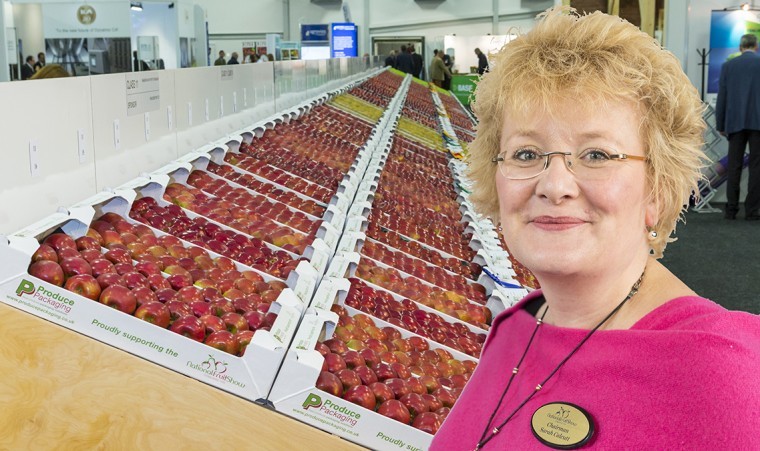The night before Fruit Focus, Scott Garnett and his team from ICL brought together the current U40’s team, FAST and some of us that might (just) be a little over the age bracket. ICL have commissioned a range of nutritional input evaluation trials managed by the FAST team and it was a most pleasant evening walking through the orchard learning about these and some other projects funded by the Brogdale trust. Our first stop was a very detailed cherry pruning trial, assessing the costs and productivity of different shape trees and the appropriate pruning regime for each variety; four of the most commercial varieties were chosen and have evaluated in each of the seven styles of growing that have commercial potential or application. The trial is in its fifth leaf so still needs a few more years of evaluation but thus far the most productive and cost effective systems are the A shape and B-Baum which is showing exceptional potential (this is a twin stem tree).
Our second trial plot was funded by the Brogdale trust and has been established to examine the impacts of water and temperature stress on current apple commercial varieties – how they will adapt to any shift in climate in the next few decades. Managed by FAST with evaluation work by Reading University students the plot has been covered by some heavy duty structures that will be skinned in September to provide a controlled atmosphere. The three areas will be kept at ambient, +2°and +4° with water managed at actual and +20% and -20%, the project is driven by curiosity about what our extreme weather future may do to our apple crop.
The ICL trial strawberry plot was extremely interesting, Scott Garnett (ICL) and Rob Cook (FAST) were clearly enjoying the work, evaluating four products that make claims to promote root growth by the addition of amino acids, hyphae and micro nutrients. One ICL product is being assessed against three market leaders (plus a regular commercial regime control of course) thus far there are no surprises. A top fruit trial into calcium treatments has confirmed that the optimum time for application is during cell division (7-10mm diameter fruitlets) with 85% of trial trees/products delivering a positive response at this stage of development, though a substantial dose is required. The use of adjuvants is being explored to increase the uptake to reduce the cost of applications – 8kg/ha is past economic benefit, but the 4kg/ha rate has shown good results which may be improved in the tank mix.
The seminars at Fruit Focus started well this year (not sure I am alone in thinking that it wasn’t a very busy show?) Guy Smith, NFU VP opened with the change in the course of our history on June 23rd, with the industry receiving support for development and productivity since 1947 it is a worrying time for those that have seen productivity rise, incomes fall and a growing dependence on subsidy that may well not be supported in anything like its current form going forward. The subsidy system came in to end the times of Britain sourcing the majority of its food abroad, from the cheapest sources; something these days which is a threat but that our consumers are more aware of and require more safety guarantees. With predictions that article 50 will be invoked in the new year we have barely two years of CAP left, an interim that will be challenging but with hopefully emerging from it a plan that suits our farming systems.
Some top fruit growers will have received an email about the Defra food unit export plan for apples and pears, if you would like to comment on this document and be included in this piece of work going forward, please could you get in touch? Its out for consultation for a month and will help the food unit formulate a strategy for the future of export for our sector.




